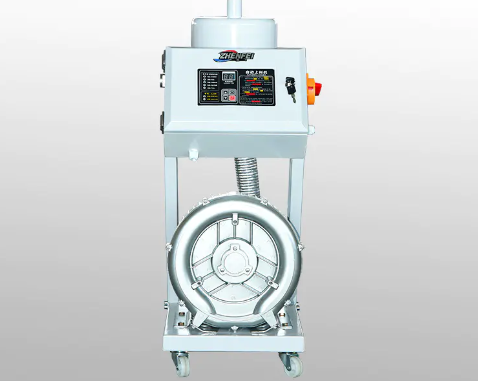Date:Jul 14, 2025
As the global manufacturing industry continues to move towards high precision, high efficiency and intelligence, HAL Vacuum Autoloader, as an important part of automated conveying equipment, plays an indispensable role in the fields of semiconductor and electronic component manufacturing. It not only undertakes the task of fast and accurate loading of materials, but also affects the automation level and production efficiency of the entire production line. Faced with the diversification and complexity of market demand, HAL Vacuum Autoloader automation technology is ushering in opportunities for rapid evolution and upgrading.

1. Integration of intelligent control systems
Fusion of AI and machine vision
Traditional HAL Vacuum Autoloaders usually rely on preset mechanical actions to operate, which makes it difficult to cope with minor deviations and changes in the production process. With the maturity of machine vision technology, more and more devices are beginning to integrate high-resolution cameras, and use image recognition technology to detect the position, posture and state of workpieces in real time, achieving higher-precision material grabbing and loading.
For example, in the handling of semiconductor wafers, machine vision can identify defects and position offsets of wafers to avoid damage caused by incorrect loading.
Adaptive control algorithm
Based on artificial intelligence and big data analysis, HAL equipment can analyze the operating data collected by sensors in real time, and dynamically adjust key parameters such as suction strength, robot arm speed, and loading angle to adapt to different types of materials and production environment changes. Adaptive control not only improves the stability of the equipment, but also extends the life of the equipment.
Remote monitoring and diagnosis system
Through the Internet of Things (IoT) technology, HAL Vacuum Autoloader can achieve remote status monitoring and fault diagnosis. Managers can view the equipment operation status in real time, detect potential faults in time, and perform preventive maintenance to avoid sudden equipment shutdowns causing production line stagnation. This move greatly improves equipment utilization and production continuity.
2. Modular and flexible design
Quick replacement and expansion modules
In order to meet the diverse needs of different customers and products, the modular design of HAL Vacuum Autoloader becomes particularly important. The key components of the equipment, such as the mechanical arm, vacuum suction cup, and sensor, are designed as modules that can be quickly disassembled and replaced, which is convenient for rapid adjustment and maintenance.
For example, when it is necessary to switch from handling wafers to handling larger electronic components, only the corresponding module needs to be replaced, which significantly shortens the equipment switching time.
Flexible configuration meets diverse needs
The modular design is also reflected in the flexible layout of the production line. The equipment can be configured with multi-point feeding and multi-point unloading according to the actual situation of the production line, flexibly adapt to various production line structures, and improve the overall adaptability and production efficiency of the production line.
3. Application of high-efficiency and energy-saving technology
Low-energy vacuum pump and energy-saving design
As the core component of HAL Vacuum Autoloader, the vacuum pump accounts for a high proportion of the total energy consumption of the equipment. The use of high-efficiency and energy-saving vacuum pumps, frequency conversion control technology, and compressed air recovery systems can significantly reduce the energy consumption of the equipment.
At the same time, optimizing the gas circuit design to reduce air leakage and ineffective energy consumption is also an important means of energy conservation.
Intelligent Energy Management System
Combined with the production rhythm, the intelligent energy management system can automatically adjust the power output of the equipment. For example, in the off-season or when the equipment is idle, the system automatically reduces the operating power of the vacuum pump or enters the standby state, thereby saving energy and reducing operating costs.
4. Improved human-machine interface and operation convenience
Intuitive touch screen operation interface
The modern HAL Vacuum Autoloader is equipped with a high-resolution touch screen. Operators can easily set equipment parameters, monitor operating status, and handle alarm information through a friendly graphical interface.
The interface design focuses on simplicity and logic, so even novices can quickly get started and reduce human errors.
Intelligent assistance and fault diagnosis function
The system integrates intelligent operation guidance and fault self-diagnosis functions. When a fault occurs, it automatically analyzes the cause of the fault and provides solution prompts to help operators quickly locate the problem and reduce downtime.
5. Enhanced integration and system compatibility
Seamless connection with MES/WMS system
The manufacturing execution system (MES) and warehouse management system (WMS) are the core information platforms of modern smart factories. HAL Vacuum Autoloader seamlessly connects with these systems through standard communication protocols, realizes automatic transmission and tracking of material information, and improves the transparency and management efficiency of the production process.
Compatible with a variety of automation equipment
HAL equipment design focuses on openness and compatibility. It can be integrated with automation equipment such as robots, conveyor belts, visual inspection equipment, etc. of different brands and models to achieve linkage automation of the entire production line and improve overall production efficiency.